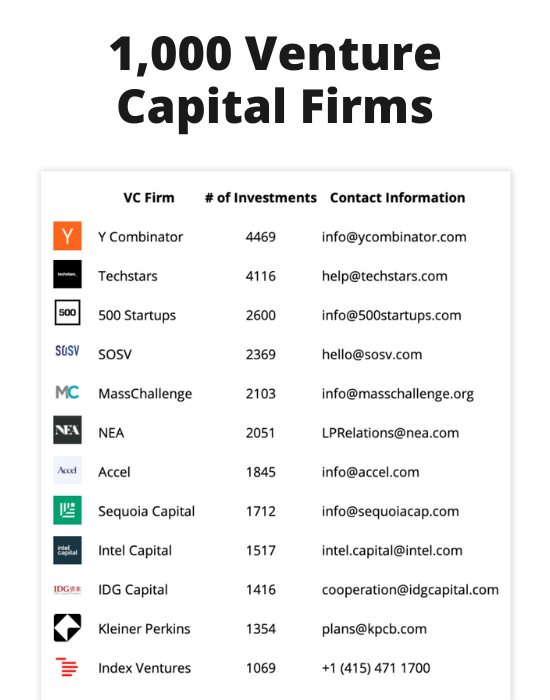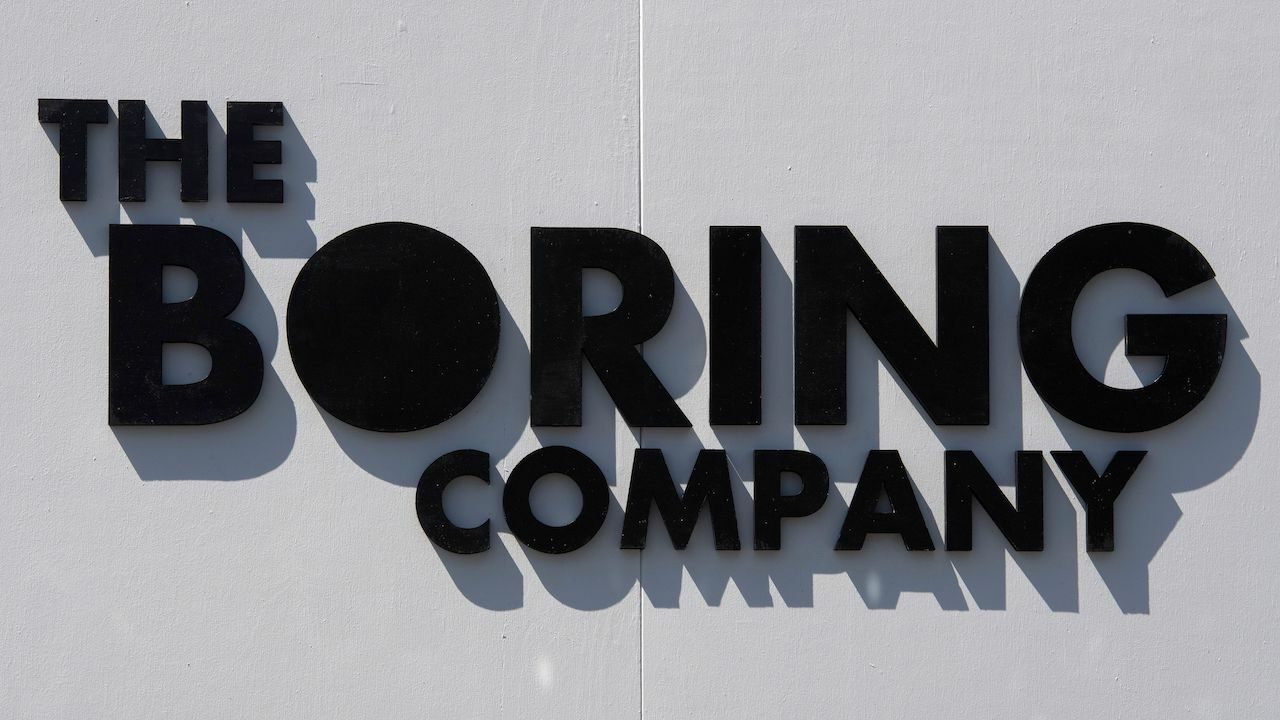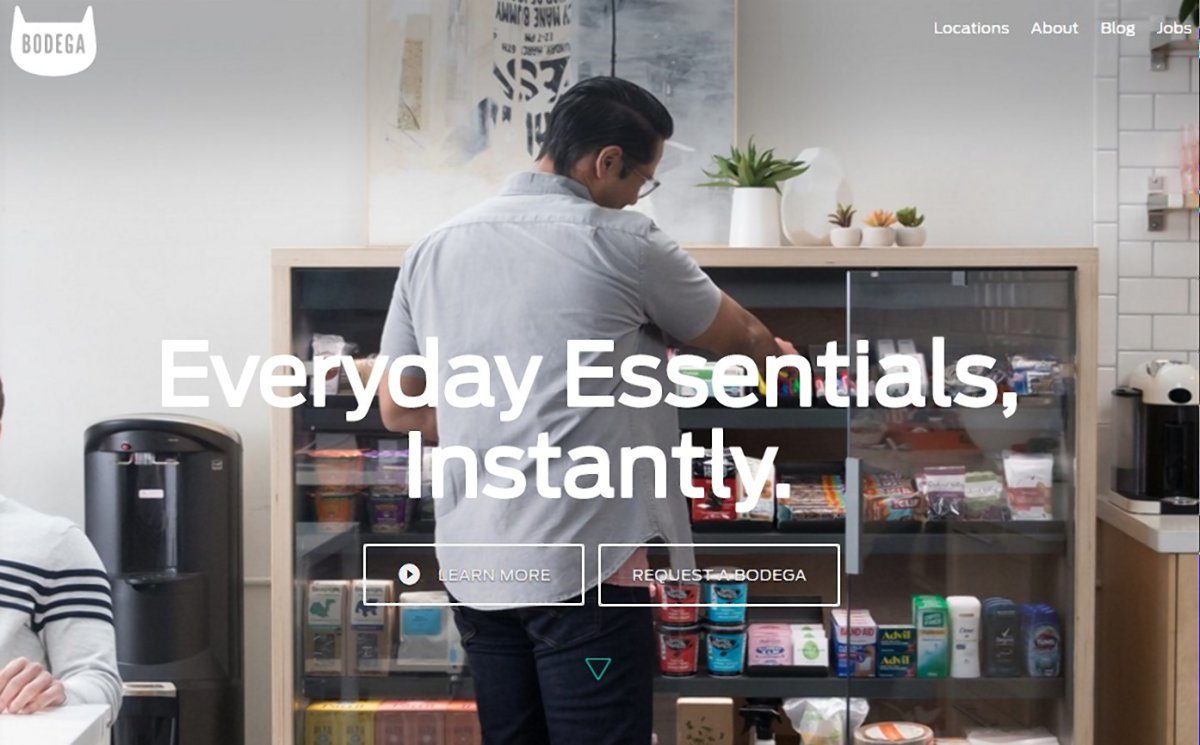
Sheet
1,000 VC Firms
Information about the countries, cities, stages and industries they invest in, as well as their contact details.
Get the Sheet for $50
The name of a startup conveys a certain image and culture. That’s why its choice is important for business.
But choosing a name can be difficult for many people.
That’s why we wrote this short 10-step process for coming up with a great startup name.
10 steps to naming a startup
Step 1: Understand the psychology behind the name
Your startup name speaks for you when you are not even there. What do people think of when they first hear your startup name? The first impression they get, what they initially think about your startup when they hear or see the name of the company, and things like that matter a lot.
As with any company or startup, you must understand that regardless of the name, there will be people who may think negatively of your startup. There’s nothing to be afraid of if there’s a minority of people who don’t like your company based on your name.
Don’t be afraid to have a loud name if you’re a tough type of company that wants to be easily recognized. Although be sure not to cross the line between a little edgy and controversial.
Step 2: Knowing What Not to Do
Before understanding what to do, you have to understand what not to do.
Here are the 3 main don’ts:
1) Name that is hard to say
The most important rule of thumb when coming up with a name for your business is that your name should be easy to pronounce, spell and remember.
If people have a hard time saying your name, chances are they’ll avoid saying it altogether. You should avoid intentionally using confusing misspellings in your name as part of an effort to be creative or unique. It is very common for complex deliberately misspelled names to cause more confusion than intrigue.
If you have a name you like but aren’t sure it’s the one, try applying “”crowded bar theory“In your name. Would it make sense if you were telling a friend in a crowded bar the name of your startup?
An example of a name that doesn’t pass the crowded bar theory would be a fictional restaurant called Sam and Ella’s. The name may sound like salmonella when heard in a crowded bar, and it is equally undesirable and unattractive.
Therefore, it is important to double-check that your brand name only needs to be heard once in order to be understood correctly.
The best business names that are easy to pronounce and easy to spell are names that potential customers are more likely to remember.
When your happy customers share your business name with their family and friends, they act as agents for your brand. Choosing an easy, clean name makes the sharing process much easier for your customers.
2) Names that are not unique
While it is always necessary to have a descriptive name that informs your audience about what your business has to offer, names that are too vivid tend to be boring.
For example, Certified Office Stationery Items LLC is a very descriptive name. From the name alone, the audience has a complete understanding of the products sold by the business. However, the name is not unique.
It’s very descriptive, giving the name a plain and simple feel. Such titles are out of date and cannot compete in today’s modern market as they will not interest or intrigue customers.
3) long name
Long names cause problems for several reasons. The cumbersomeness of a long name will turn off many potential clients and customers as long names come with long URLs.
You should also consider possible future social media handles for your brand. Twitter handles only stop at 15 characters, so make sure your name is short enough to fit or concise.
Step 3: What’s Your Purpose?
If you haven’t already defined your startup’s purpose, you should start by spending a few minutes describing your company’s ambition and the promise you make to your customers. It’s a good practice to choose a name that connects with your purpose and values.
If you haven’t defined your objective, perhaps these two templates will be useful to you:
- We help A (customer) to B (problem) to C (solution), For example: We help email marketers create their newsletter emails by giving them fully responsive and easy to use email design tools.
- [Famous Company] For [New Domain], For example: AirBnB for supercars, or Tinder for dogs.
Defining your buying persona helps you understand your customers, which is something you should do before naming your startup.
To do this, try writing down the following characteristics of your ideal customer on a sheet of paper:
- Background and Demographics: History, gender, age, role, company, and income.
- Hobbies and interests.
- Short, medium and long term goals.
- daily challenges.
- Common objections and biggest fears.
- marketing message.
- elevator pitch.
Step 5: Brainstorming Keywords
Write some keywords that can be related to your startup. Then start playing with them. Make changes, transform them and merge the two of them.
It is recommended to stick to 2 syllables, as shorter startup names are more easily remembered. We only need to look at the names of some of the biggest companies around the world to understand this:
- Apple
- Sony
- youtube
The union of two keywords may result in an explicit or implicit name.
Explicitly refers to the purpose clearly expressed in the name of the company. The perfect example of this is Facebook, which is confirmed by the combination of keywords face + book. Implicit refers to a name that, just by reading it, people cannot imagine what the company is about. A great example is Tesla.
Step 6: Shortlisting Your Names
Once you have a list of names that you like, it is time to choose your favorite name. To do this, you can score your name on 4 different criteria. This is easily explained with a diagram:

- Refers to the intuitive question: Does the name relate to our business?
- Visual refers to the question: how good does the name look?
- The sound refers to the question: does the name sound good?
- Emotional value refers to the question: What do people think of when they hear the name?
Also, when choosing your favorite, be sure to look at linguistics. Some people create a startup, choose a name, and when their startup becomes an international company, they find out that the meaning of the name is offensive or banned in another country. To check if there is a problem with your startup name, we recommend a tool called word safety,
Step 7: Generator Name
For those who are still in a dilemma and are facing a lot of hurdles in coming up with a name, a simple name generator. These tools will suggest the best possible name based on your parameters.
Lucky for you, we’ve handpicked our favorites to help you come up with a name faster.
- namelixBranded: Generates short names that are relevant to your startup idea or your business idea. Every time you save a name, their AI algorithm learns about your preferences and gives you better recommendations over time.
- breakfast: They use machine learning and the best of naming techniques to provide you with memorable startup names.
- brandbucket: This generator offers over 50,000 names that are already made up and ready to use.
Step 8: Legal Recognition
You will most likely want to structure your startup under an LLC or corporation; You’ll need to find the secretary of state’s records to be sure your name won’t be the same as other companies that are already registered. If the name is too similar to another business, the Secretary of State may not allow you to register the name.
If you are concerned because you think your company name may be used in another industry, you can do a trademark search by checking all patents.
We wholeheartedly recommend hiring a professional to guide you through the legal verification process.
Step 9: Ask Your Audience, Family and Friends
The name verification coming from your audience is essential as they will have no problem giving you critical feedback. A great way to collect customer feedback is through online surveys.
It is risky to test the name with your friends and family. But if you still prefer to do it this way, make sure they have no problem telling you their true feelings about the name, and be honest if they don’t like it.
All-in-one newsletter for startup founders
Every week, I’ll send you top 10 startup news and resources and analysis of a failed and a hot company. Join +30,000 other startup founders!
You have reached the last step. Your startup is on the right track.
It’s time to buy a domain. Visit your preferred domain name registrar and, if available, purchase .com, .net, .org, and any other domain of your choice. But if is possible to use .com as consumers are more familiar with them.
After this register your company in all social media. If possible, register using the same name you’ve chosen for your company.
And last but certainly not the least, register a trademark for the company name. In some countries and states, you can do this in just a few minutes and without the help of an attorney by filing an application online.
This can cost you between $250 and $350, and you will need to fill in the required information. But in other cases, you will need the help of a professional.
Startup Naming Case Studies
boring company
The name comes from an idea Elon Musk derived from living in California where traffic is notoriously bad.
They believed that traveling underground through tunnels would be safer and faster than cramming people onto a multitude of highways that are limited by the number of people on the road and the many safety hazards that occur every day.
Together The Boring Company There is humor and intelligence. When you listen, you laugh a little and you can’t help but instinctively want to know what the startup does.

unbranded
unbranded is an e-commerce company that sells food, beauty and home goods. In today’s era, people are used to brand names like Nike, Gucci, Apple etc. but a startup called Brandless undoubtedly makes it memorable.

Bodega
Bodega, or as it is now known as Stockwell, is a vending machine company. The name comes from paying respect to the corner stores many people grew up with. But ironically, those who found out about the company online soon saw its name as offensive.
When you have feedback, you should quickly acknowledge what they did wrong, not be like Bodega, and wait ten months to address and finally rename the startup. Founders Paul McDonald and Ashwath Rajan didn’t intentionally want to offend anyone, but when you come up with a name, you have to consider whether it might sound offensive to others in any way.
In addition, you should also understand what your name means in other countries. All countries have different beliefs and customs, and you should take this into account.

wrapping up
Finding the right name for your business can be a daunting task. There are many challenges and obstacles to getting your business name seen.
Once you find your business name, everything starts to feel more natural because you now have a name you can be proud of and stand behind. One that will be memorable, easy to pronounce, and hopefully create shock waves in your respected market.
With the help of this guide, the tedious and time-consuming task of naming your startup is now just a few simple steps away.




